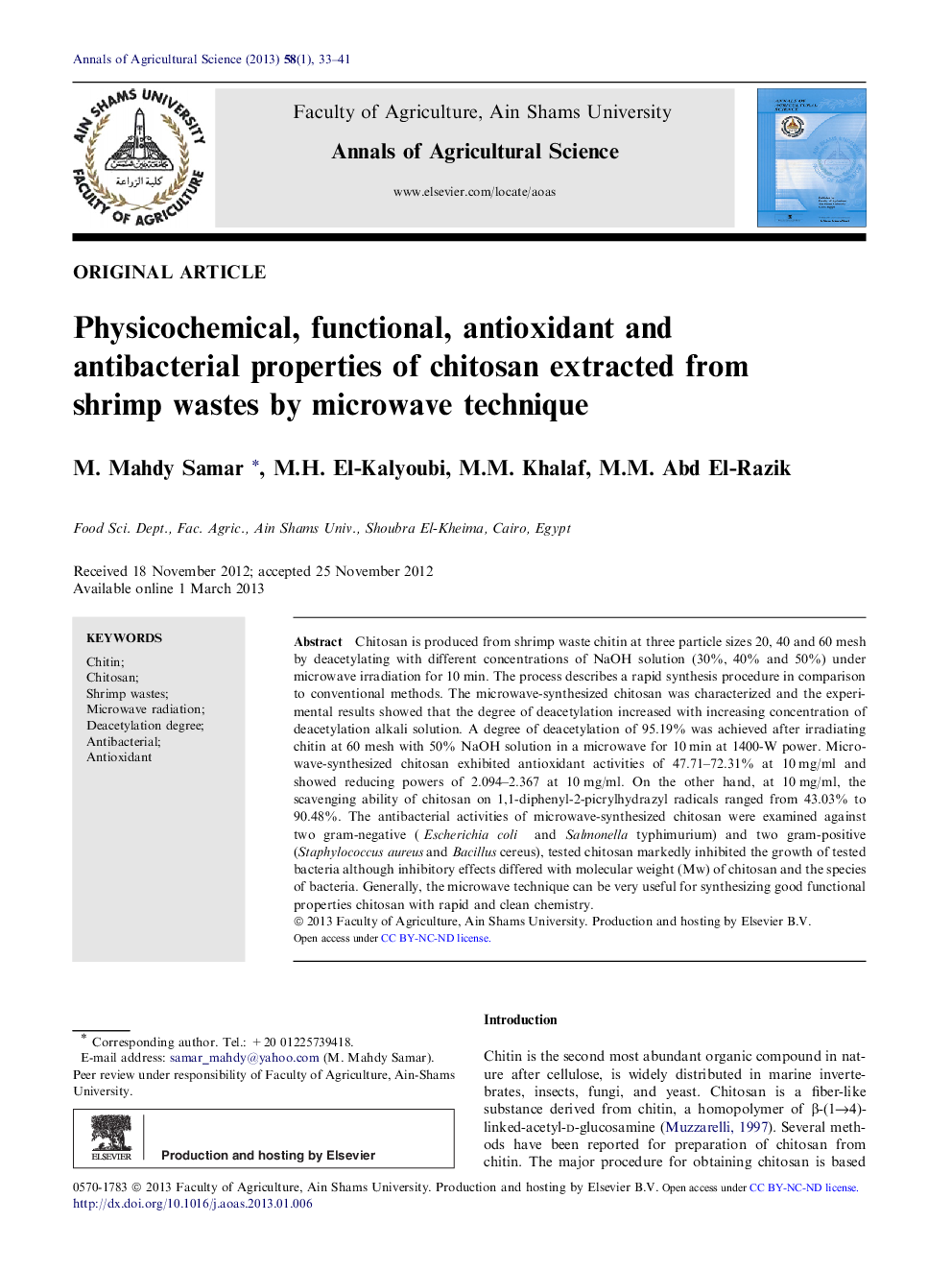| Article ID | Journal | Published Year | Pages | File Type |
|---|---|---|---|---|
| 4492905 | Annals of Agricultural Sciences | 2013 | 9 Pages |
Chitosan is produced from shrimp waste chitin at three particle sizes 20, 40 and 60 mesh by deacetylating with different concentrations of NaOH solution (30%, 40% and 50%) under microwave irradiation for 10 min. The process describes a rapid synthesis procedure in comparison to conventional methods. The microwave-synthesized chitosan was characterized and the experimental results showed that the degree of deacetylation increased with increasing concentration of deacetylation alkali solution. A degree of deacetylation of 95.19% was achieved after irradiating chitin at 60 mesh with 50% NaOH solution in a microwave for 10 min at 1400-W power. Microwave-synthesized chitosan exhibited antioxidant activities of 47.71–72.31% at 10 mg/ml and showed reducing powers of 2.094–2.367 at 10 mg/ml. On the other hand, at 10 mg/ml, the scavenging ability of chitosan on 1,1-diphenyl-2-picrylhydrazyl radicals ranged from 43.03% to 90.48%. The antibacterial activities of microwave-synthesized chitosan were examined against two gram-negative (Escherichia coli and Salmonella typhimurium) and two gram-positive (Staphylococcus aureus and Bacillus cereus), tested chitosan markedly inhibited the growth of tested bacteria although inhibitory effects differed with molecular weight (Mw) of chitosan and the species of bacteria. Generally, the microwave technique can be very useful for synthesizing good functional properties chitosan with rapid and clean chemistry.
